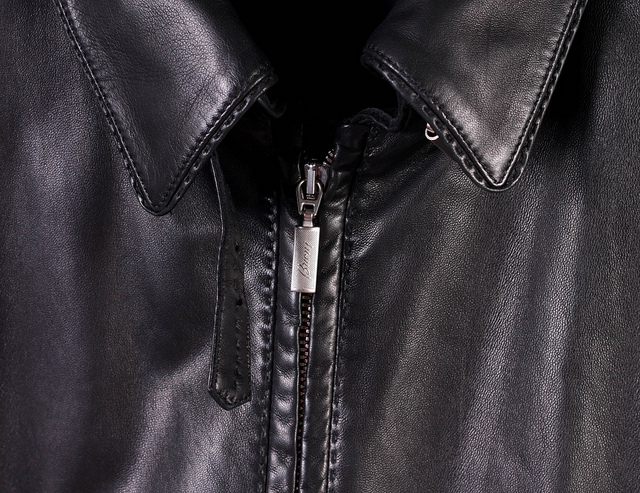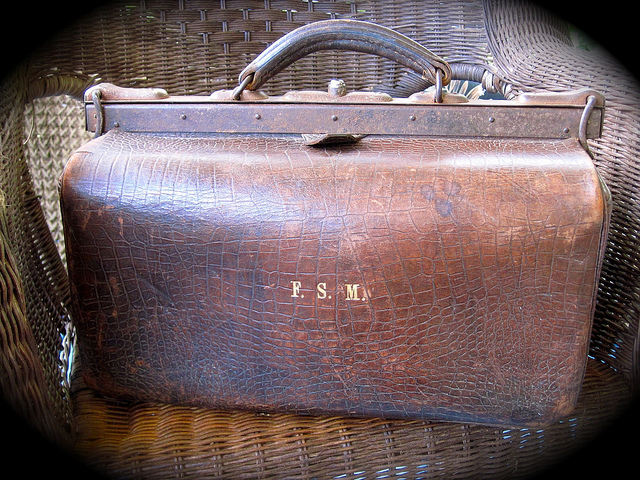
by Leather | Leather Questions |
Leather is arguably one of the most prized and sought after textiles in the world. Its unique combination of style, strength, durability and visible aesthetics makes it an attractive choice for jackets and other garments. But just because a jacket “looks” like it’s made of leather doesn’t necessarily mean that it is. Many companies use fake (also known as faux) leather to mimic its appearance and characteristics. So, how can you tell the difference between real and faux leather? Check The Edges Inspect the edges to see whether they are the rough or clean. Faux leather is often made with clean-cut edges that are completely symmetrical, whereas genuine leather features rough edges and corners with visible imperfections. Of course, some products won’t have edges, so you’ll have to look at other elements to determine if it’s real or not. This method alone isn’t a fool-proof way to determine the authenticity of leather, but it’s one more tool that can help. Smell It You can often determine whether a leather product is real or fake simply my smelling it. Genuine leather has a distinct, yet pleasurable, odor that’s not found elsewhere. It’s hard to describe it without smelling it yourself, but I guess you could compare it to a deeper pine scent with hints of bark. Faux leather, on the other hand, smells more like plastic. Try placing your nose up to the product and taking a couple of whiffs. If it smells like plastic with heavy hints of chemicals, it’s probably fake. Check The Tag Of course, another way to verify the authenticity of leather is to look for...

by Leather | Leather Care, Leather Questions |
We’ve talked about some of types of leather on our blog, but we’ve yet to discuss the different forms. The truth is that most people don’t realize just how many different forms of leather there are. They assume leather is leather, with no real distinguishable differences. But subtle nuances between the different forms of leather can make a world of difference in its appearance and characteristics. Chrome-Tanned Leather Originally invented back in the mid 1850s, chrome-tanned leather is created using a special chemical known as chromium sulfate along with various chromium salts. It’s become the leading and most popular form of leather on the market, and for good reason: it is supple, soft and more pliable that other forms of leather. Furthermore, it doesn’t lose its shape drastically when exposed to water. Some people refer to chrome-tanned leather as “wet-blue” leather, a name derived from its light blue coloring that’s created through chrome tanning. Chrome-tanned leather takes about 24 hours to complete, which is a fraction of the amount required to produce other forms of leather. Vegetable-Tanned Leather The second most popular form of leather is known as vegetable-tanned leather. As the name suggests, it’s created using tannins and other compounds that are readily found in vegetables, trees and fruits. Vegetable-tanned leather has a distinct neutral brown color with various shades depending on the chemicals used during its tanning. According to some experts, vegetable-tanned leather is the only form of leather that’s acceptable to use in leather stamping and carving. Unlike chrome-tanned leather, vegetable-tanned leather is not suitable in water. When exposed to water for a prolonged length of...

by Leather | Leather Questions |
When researching the different types of leather, you may come across a particular variety known as split leather. Based on the name alone, it’s difficult — if not impossible — to determine what exactly this means. To make things even more confusing, very few products are made using split leather. If you’re still scratching your head trying to understand what split leather is, keep reading for a breakdown of the term. Leather is typically sold in one of four different forms: full-grain, top-grain, corrected-grain and split. Products made of the highest quality leather are full-grain, which means it has not been buffed or sanded down in any way shape or form. This preserves its strength and durability while also keeping its genuine leather appearance. Top-grain, on the other hand, is a slightly lower quality of leather in which the split layer is removed and the surface is sanded or buffed down. Unique leather type A third type of leather is corrected grain, which as the name suggests, has an artificial grain added to the surface. You might be wondering why anyone would want to add a grain to the surface of a leather rawhide. Well, if the leather was low-quality, adding a grain may improve its function and appearance. Corrected-grain leather still pales in comparison to full and top-grain, but it’s still a common technique used by leather workers today. The fourth and final type of leather is split leather. Split leather is unique in the sense that it’s the only type of leather made from the fibrous area of the cow hide that’s leftover from the processing of...





Recent Comments